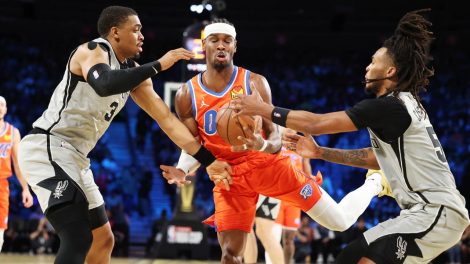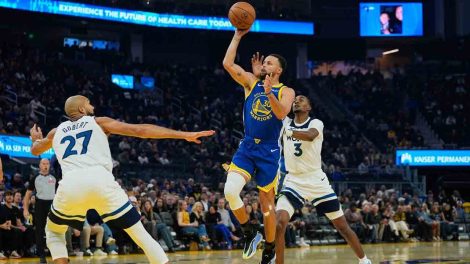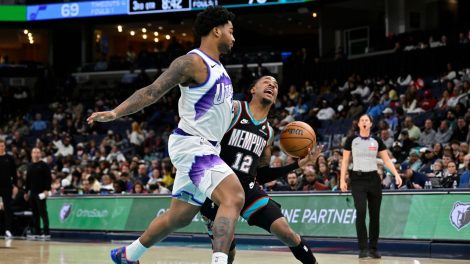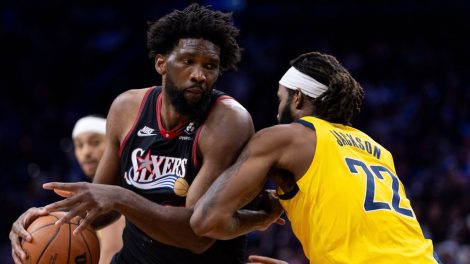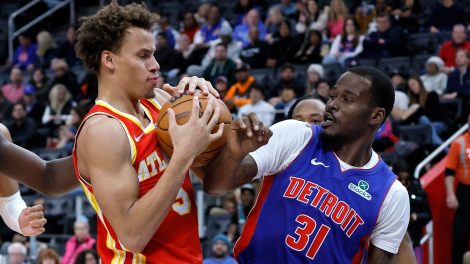Last season an injury cost DeMar DeRozan a chance at his second NBA all-star appearance. He went down awkwardly on the baseline against the Dallas Mavericks on Nov. 28, 2014, injured his groin and missed 22 games—an eternity for a workhorse who has otherwise missed just 11 in his career.
Being badly injured for the first time played with his mind.
“I don’t talk about it too much,” DeRozan told Sportsnet this week. “But mentally that injury was tough on me. It took a lot out of me just to accept that I was hurt and I was going to be away from the game that long.”
But DeRozan used his downtime wisely. In fact you could argue the seeds for a career-best season that should result in an Eastern Conference All-Star nod were planted when he was laid up on his couch, killing time.
Voting closed on Monday night and even though DeRozan helped lead the Raptors with 30 points in a 112-100 win over the Brooklyn Nets it’s not likely he’ll get enough support to be named a starter when the results are announced on Thursday night. But his work in helping lift the Raptors to the No.2 seed in the East after playing one of the NBA’s most difficult schedules in the first half of the season should earn him a nod from the coaches when the reserves are announced January 28.
 Download it now: iOS | Android | Windows | Special Offer
Download it now: iOS | Android | Windows | Special Offer
If all goes well DeRozan and backcourt mate Kyle Lowry should be there when the player introductions are made at the Air Canada Centre on Feb. 12; neither will be courtesy picks. Lowry is a lock whether he makes it as a starter or not. DeRozan’s status is nearly as certain. “In my heart of hearts, he’s an all-star,” says Raptors head coach, Dwane Casey.
It’s not often an NBA player has a breakout year in his seventh season, but DeRozan is doing just that and it’s a reflection of the man that it has come in part because of how he filled those long basketball-free hours while injured and his willingness to honestly appraise his game.
“I had to find things that kept me occupied, mentally, and that was being a student of the game,” he said.
He’d lie around on his couch, poring through old games on YouTube, and calling up player breakdowns of more contemporary ones via Synergy Sports Technology. The kid who came out of the University of Southern California after his freshman season labelled a high flyer was more of a deep thinker when it came to his craft than he was given credit.
Admittedly his speed and jumping ability fast-tracked him to the NBA; DeRozan had been the most athletic kid on the court since he was in fifth grade. It allowed him to skip a lot of steps, but over the years he has been determined to circle back and fill in the gaps in his development and become a more complete player.
“When I did the dunk contest early on and people would say ‘he’s a dunker,'” says DeRozan, who competed in the All-Star weekend’s dunk contest in 2010, his rookie year. “I hated that label. I felt like I was more than that, so I wanted to work on everything so that I was more than that.”
His game has evolved in increments, year over year, but this season through 41 games DeRozan has taken some significant jumps on his way to averaging a career-best 22.4 points per game per 36 minutes. He’s second in the NBA in free throws attempted and made and he’s getting to the line more than he ever has before. His defensive rating is a career-best 106, moving him to within a fraction of the league average for the first time in his career. He’s passing more effectively than ever, averaging a career-best four assists per game with and a career-best assist percentage (the rate at which he assists on teammate’s field goals while on the floor) of 20.1 percent.
It’s added up to a Player Efficiency Rate of 20.1 and a Win Shares/48 of .162, both significantly better than his previous highs, set during his first all-star season in 2013-14.
The outline of his current season took shape over the final six weeks of last year. It took DeRozan time to get back into game shape after his injury, but all that study on the couch began to creep into his game as his assist totals and shooting percentages spiked in March and April
Maybe his first major injury was a brush with his athletic mortality or maybe he just had too much time on his hands, but he found himself drawn to examples of players who excelled on their brains, rather than their athleticism.
“I watched all these guy who were successful and weren’t even athletic and I asked myself: How were they successful when they weren’t the fastest on the court?” says DeRozan. “You tried to figure out how they did it and apply that to your game, so I didn’t have to jump higher than the defender or be faster than the defender, but just be craftier, smarter and be more patient.”
His role models were players like Andre Miller, now in his 17th season, and never a threat to dunk on anyone, but long considered one of the NBA’s smartest players. He studied Michael Jordan too—but the version who was able to average 20 points a game playing on one leg in his final season with the Washington Wizards at age 39. Sam Cassell was another subject of study as well as Alex English, the former Raptors assistant coach who slowed the game down on his way to averaging 27.3 points a game during his eight consecutive all-star seasons beginning in 1982.
“You watch that and try to pick and choose how they score and how they got to the basket and draw fouls and that was one thing I really tried to pay attention to, because, you know, one day I’m going to be old. I’m going to be 32, 33,” says DeRozan. “You know, now you have guys coming into the league and they’re 21, 22, and you know they’re faster than you and eventually you’re going to have to be like how can I kill them slowly? So instead of waiting until I’m there, why not add that to my game now so I have both options?”
The results of DeRozan’s efforts have earned the respect of his coach, Casey, who admirably describes DeRozan as a student of the game, the kind of player you he can talk with about what happened the night before on the West Coast because you know he was watching games on an off night.
When DeRozan came back from his injury last season it was Casey who noticed him being more patient and moving the ball with more purpose and praising his then 25-year-old shooting guard’s “old man game.” He’s seen him age even more gracefully this season.
“What he’s got better at is seeing where the help is coming from,” says Casey. “He’s not worried about the guy guarding him, he’s thinking about that second defender. He’s attacking the defence, the defence isn’t attacking him.”
DeRozan’s injury last season played games with his mind. It was the first time the body that had carried him to fame and fortune had ever let him down. But as a student of the game he took advantage of his forced study break, and a year later he’s playing mind games with the rest of the NBA.

